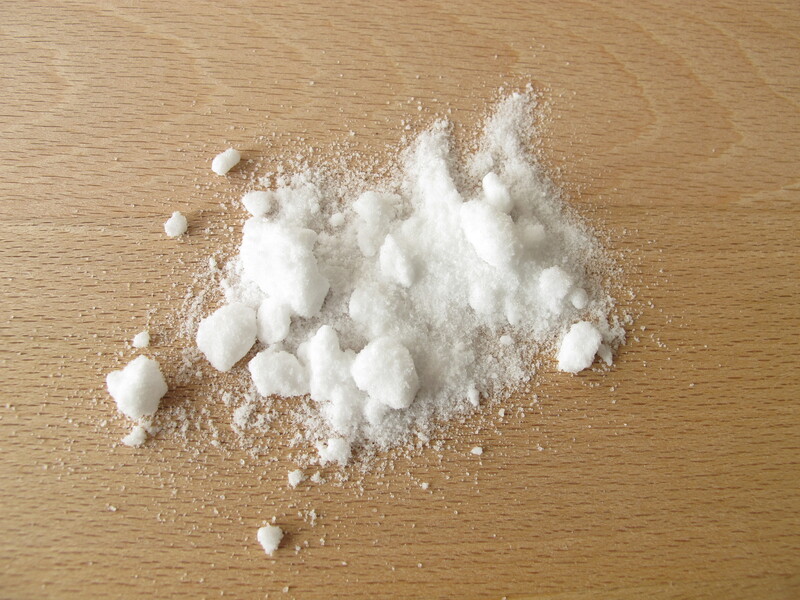Sofa Covers Made Easy: Effective Washing Without Harm
Posted on 26/05/2025
Sofa Covers Made Easy: Effective Washing Without Harm
Sofa covers not only add style and comfort to our living spaces, but they also protect our furniture from spills, dust, and daily wear and tear. However, to keep them looking their best, it is essential to clean them regularly. Many are concerned that washing sofa covers can cause more harm than good--leading to shrinking, fading, or even damaging the fabric. In this comprehensive guide, we will show you how to wash your sofa covers without causing any damage, ensuring they stay fresh, clean, and beautiful for years to come.

Understanding Your Sofa Cover Fabric
The first step towards washing your sofa covers safely is to understand the fabric type. Not all sofa covers are created equal; they come in a variety of materials, each with their own requirements:
- Cotton Sofa Covers: Soft and breathable, but prone to shrinking if not cared for properly.
- Polyester Sofa Covers: Durable and wrinkle-resistant, these are generally low-maintenance.
- Linen Sofa Covers: Luxurious in appearance, but often require delicate handling due to their natural fibers.
- Microfiber Sofa Covers: Stain-resistant and great for families with kids and pets.
- Velvet and Chenille Sofa Covers: Requires special attention to maintain their texture and sheen.
- Blended Fabrics: Many modern sofa slipcovers use a combination of materials for improved durability and stretch.
Check the manufacturer's care label: Every sofa cover should have a care label that provides cleaning instructions. Always start there before proceeding!
Why Regular Sofa Cover Washing is Important
Frequent cleaning of sofa covers offers numerous benefits, including:
- Allergen and Dust Removal: Over time, sofa covers accumulate dust, pet dander, pollen, and other allergens. Washing them helps keep your air clean and fresh.
- Spill and Stain Management: Immediate and regular cleaning of spills prevents permanent staining and helps maintain the cover's original appearance.
- Odor Control: Washing removes trapped odors from smoke, pets, or food, giving your living space a refreshed feel.
- Extended Lifespan: Keeping sofa covers clean and cared for helps prevent early wear and keeps the fabric looking new.
Preparing for Safe Sofa Cover Washing
1. Remove and Inspect the Covers
Before washing your sofa covers, carefully remove them from the sofa. Check for any rips or tears, as these should be repaired before washing to prevent worsening. Additionally, inspect for tough stains or spots that may need targeted treatment.
2. Pre-Treat Stains
For stains, especially from food or beverages, it's best to pre-treat before a full wash. Use a fabric-safe stain remover or patch test a mild detergent on a hidden area. Gently dab the stain and let it set for 15-20 minutes. Avoid harsh scrubbing, as it can damage fibers and fade colors.
Choosing the Best Washing Method
Depending on your sofa cover fabric, you might choose between machine washing, hand washing, or professional cleaning. Here's how to decide:
- Machine Wash: Most cotton, polyester, and microfiber covers are safe for machine washing, provided you follow label instructions.
- Hand Wash: Delicate fabrics like linen or velvet are better handwashed in cold or lukewarm water with mild detergent.
- Dry Cleaning: Some covers, especially those with blended fabrics, trims, or intricate designs, may require dry cleaning for safety.
If uncertain, always perform a patch test or consult the manufacturer for advice on your sofa slipcover's safest cleaning method.
Step-by-Step Guide: Machine Washing Sofa Covers Without Harm
- Read the Label: Only machine wash if the label allows. Check for recommended temperature settings and cycle type.
- Close Zippers and Fasten Velcro: This helps maintain the shape of the cover and prevents snagging or tearing during the wash.
- Turn Inside Out: Protect the outer surface by washing the covers inside out; this reduces abrasion and color fading.
- Use a Gentle Detergent: Choose a mild, color-safe detergent. Avoid bleach or harsh chemicals that can break down fibers and fade colors.
- Select the Right Cycle: Use the gentle or delicate cycle with cold water, as hot water can shrink or warp fabric.
- Wash Separately: Don't overload the machine or wash sofa covers with heavy towels or clothes, as this may cause twisting and damage.
Expert Tip:
Adding a cup of white vinegar to your rinse cycle can help remove residue and naturally soften the fabric, making your sofa covers feel even more comfortable.
Hand Washing Sofa Covers: For Delicate Fabrics
Some sofa cover materials require extra care. Here's how to hand wash them effectively:
- Fill a Bathtub or Large Basin: Use cool or lukewarm water and add a small amount of gentle detergent.
- Submerge Covers Gently: Swish the covers around for a few minutes to loosen dirt. Do not wring or twist the fabric.
- Rinse Thoroughly: Drain the soapy water and refill with clean water to gently rinse out detergent.
- Press Out Excess Water: Lay the covers flat on a towel and roll them up to squeeze out water without stretching or wringing.
Avoid excessive agitation-- gentle handling is essential for delicate fabrics like velvet, linen, or silk blends.
Drying Sofa Covers Without Damage
Air Dry is Best
Never use high heat to dry sofa covers. Tumble drying on high can cause shrinkage, fading, and fabric warping. Instead:
- Lay Flat to Dry: Spread the covers flat on a clean, dry towel or drying rack. Shape them back to their original form, smoothing any wrinkles.
- Hang to Dry: If space allows, drape over a sturdy clothesline or hanger. Make sure the covers are evenly supported to avoid stretching.
Machine Dry With Caution
If the care label allows, tumble dry on low heat or air fluff only. Remove the covers while slightly damp--this will make it easier to place them back on the sofa, ensuring a snug, wrinkle-free fit.
Preventing Common Sofa Cover Washing Mishaps
- Color Bleeding: Test wash dark covers separately to avoid staining lighter fabrics.
- Shrinkage: Always use cold water unless otherwise specified and avoid high-heat drying.
- Pilling: Wash with similar fabrics to reduce friction; turn covers inside out.
- Wrinkling: Smooth out covers immediately after washing and drying.
- Loss of Shape: Never wring out sofa covers or stretch them when wet.
Extra Care: Professional Cleaning for Sofa Slipcovers
Some covers may require more care than you can provide at home. If your covers are marked "dry clean only," made from delicate materials, or have complex piping, trims, or embellishments, consider using professional upholstery cleaning services for a deeper and safer clean.
Maintaining Sofa Covers Between Washes
Minimizing washing frequency can help keep your sofa covers in great condition for longer. Here are some helpful maintenance tips:
- Vacuum Regularly: Use a handheld vacuum with a brush attachment to remove dust and debris.
- Spot Clean Immediately: Address any spills as soon as they occur with a damp cloth and mild soap.
- Rotate Sofa Cushions: If your sofa allows, rotate and flip cushions weekly to promote even wear and keep the covers looking fresh.
- Sun and Air: Occasionally air out covers in indirect sunlight to keep odors at bay and kill bacteria.
Eco-Friendly and Gentle Washing Tips
- Use Natural Detergents: Opt for biodegradable, fragrance-free detergents for less environmental impact and fabric protection.
- Less is More: Don't overload with soap. Excess detergent can be hard to rinse and may cause fabric buildup or irritation.
- Cold Water Wash: Save energy while reducing the risk of damage by always using cold or lukewarm water if possible.
Replacing or Upgrading Your Sofa Covers
If your sofa covers are beyond cleaning or repair, it might be time to upgrade. Choose removable and washable sofa covers that fit your lifestyle. Look for:
- Quality Material: Durable fabrics with a tight weave last longer and resist stains better.
- Colorfastness: Ensure the fabric won't bleed or fade after multiple washes.
- Fit and Design: Opt for covers with elastic edges or zippers for easy removal and a snug fit.
Changing your cover is an affordable way to refresh your home decor without a major investment.

Frequently Asked Questions about Sofa Cover Washing
1. How often should I wash my sofa covers?
It depends on your household. For families with children or pets, washing every 2-3 months is recommended. For occasional use, every 6 months may suffice.
2. Can all sofa covers be machine washed?
No. Always check the label. Some delicate fabrics or covers with decorative elements require hand washing or dry cleaning.
3. What is the best way to dry sofa covers?
Air drying is safest. Lay flat or hang in a shaded area. Only machine dry on low heat if the label allows.
4. How can I remove tough stains?
Pretreat stains with stain remover or a solution of vinegar and baking soda. Always test on an inconspicuous spot first.
5. Why did my sofa cover shrink?
Shrinking usually results from hot water washing or high-heat drying. Stick to cold water and air drying to maintain shape.
Conclusion: Wash Sofa Covers Safely for Lasting Beauty
Sofa covers made easy means taking simple, effective steps to wash and care for them without causing harm. By identifying your fabric type, choosing the appropriate cleaning method, and preventing common mishaps, your sofa slipcovers will remain an attractive and hygienic addition to your home. Remember to handle them with care--wash with gentle cycles and products, avoid heat, and air dry whenever possible.
Keeping your sofa covers clean and damage-free contributes not just to a beautiful home, but also to a healthier environment for your family. Now that you know how to wash sofa covers effectively without harm, you can enjoy your stylish living space with confidence and comfort!
For more sofa care tips and tricks, bookmark this guide and make sofa covers made easy a part of your regular cleaning routine.




